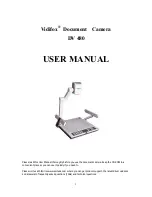
The self-timer can be used to minimize camera shake with long exposures. When using the
camera on a tripod, photographs of static subjects (landscapes, still-lifes, or close-up
photographs) can be made with the self-timer. Because no contact is made with the camera
during exposure, there is no risk of camera shake caused by the operator. Two seconds self-
timer is more suitable for this purpose.
47
Used for self-portraits, the self-timer delays the release of the shutter for approximately
ten seconds after the shutter-release button is pressed. The self-timer is set on section
1 of the recording menus (p. 44).
Shooting tips
SELF-TIMER
The self-timer is counted down on the monitor. During the countdown, the self-timer lamp
on the front of the camera (3) blinks and is accompanied by an audio signal. A few
seconds before the exposure, the self-timer lamp blinks rapidly. The lamp glows steadily
just before the shutter fires. To stop the countdown, slide the zoom lever to the left or
right. The self-timer drive mode is reset to single-frame advance after the exposure. The
audio signal can be turned off in section 3 of the setup menu (p. 97). The self-timer delay
can be changed to two seconds in section 4 of the setup menu (p. 99).
With the camera on a tripod, compose the picture so
the subject is within the focus frames. Press the
shutter-release button partway down to lock the
exposure and focus (1). Press the shutter-release
button all the way down to begin the countdown (2).
2
3
1
Because focus and exposure are determined when
the shutter-release button is pressed, do not stand in
front of the camera when taking a self-timer image.
Always confirm the focus with the focus signals
before beginning the countdown (p. 25).
Содержание DiMAGE DiMAGE Z6
Страница 1: ...INSTRUCTION MANUAL E...
















































